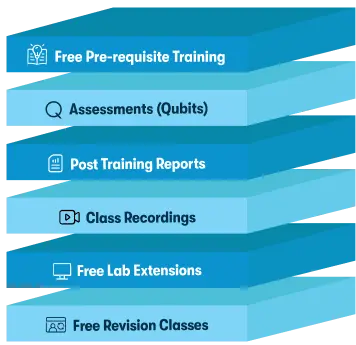We're open through the holidays to support your upskilling goals — book your session today!
We're open through the holidays to support your upskilling goals — book your session today!
Unable to find what you're searching for?
We're here to help you find it


PL-300T00: Design and Manage Analytics Solutions Using Power BI Course Overview
The PL-300T00: Microsoft Power BI Data Analyst course is a systematic program for professionals aiming to achieve mastery in data analytics. This training provides a validated methodology for transforming learners into proficient users of Microsoft Power BI, equipping them with the skills to methodically connect, process, and analyze data. The curriculum is designed to build core competencies in shaping data, designing robust data models, and creating dynamic reports and dashboards, which are essential for any organization conducting data analytics for business. Through empirical, hands-on labs, you will test hypotheses using DAX calculations, advanced analytics, and row-level security. This course is a foundational component for career advancement, enabling organizations to harness the full analytical potential of PL300 Microsoft Power BI. It also provides critical information regarding the PL-300 certification cost, ensuring candidates are fully informed before proceeding.
Successfully delivered 1,009 sessions for over 37,192 professionals
Purchase This Course
USD
View Fees Breakdown
| Course Fee | 2,210 |
| Exam Fee | 200 |
|
Total Fees (without exam) |
2,210 (USD) |
USD
View Fees Breakdown
| Course Fee | 1,700 |
| Exam Fee | 200 |
|
Total Fees (without exam) |
1,700 (USD) |
USD
View Fees Breakdown
| Flexi Video | 16,449 |
| Official E-coursebook | |
| Exam Voucher (optional) | |
| Hands-On-Labs2 | 4,159 |
| + GST 18% | 4,259 |
|
Total Fees (without exam & Labs) |
22,359 (INR) |
|
Total Fees (with Labs) |
28,359 (INR) |
Select Time
Select Date
| Day | Time |
|---|---|
|
to
|
to |
♱ Excluding VAT/GST
You can request classroom training in any city on any date by Requesting More Information
Inclusions in Koenig's Learning Stack may vary as per policies of OEMs
Scroll to view more course dates
You can request classroom training in any city on any date by Requesting More Information
♱ Excluding VAT/GST
*Inclusions in Koenig's Learning Stack may vary as per policies of OEMs
PL-300T00: Design and Manage Analytics Solutions Using Power BI
PL-300T00: Design and Manage Analytics Solutions Using Power BI
Suggestion submitted successfully.
Koenig Learning Stack
Inclusions in Koenig's Learning Stack may vary as per policies of OEMs



